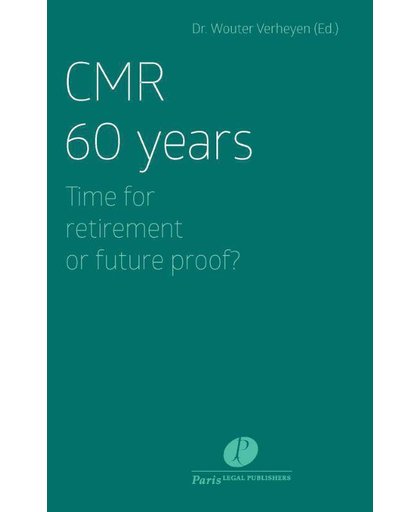

CMR 60 years: time for retirement or future proof
Available at:
On May 19 1956, the CMR-Convention was signed, aiming at providing uniform rules for the contract of carriage of goods by road. The Convention proofed to be very successful and is after 60 years still in force in 55 member states. With this, the Convention provides uniform rules in most of Europe and the Middle East and still contributes to the underlying aim of legal certainty and predictability. Even though the Convention is very successful, there are also a returning number of critiques on the CMR Convention. In general, critiques on the Convention can be found in two domains: 1. The absence of a uniform interpretation of certain key provisions of CMR (for example the scope rule, force majeure provision and breaking through rule). 2. The unfitness of CMR for twenty-first century transportation (for example the height of the limits, the absence of specific rules for multimodal contracts and optional carriage contracts, the outdated (?) rules on successive carriage and even the mode-specific nature of CMR all together). For the occasion of the 60th birthday of the Convention these questions were presented to a panel of prominent CMR-scholars: Is it time for retirement or is the CMR Convention future proof? The answers to this questions were provided during a two day conference in October 2016. This book is a result of that conference and bundles the conference contributions which earlier appeared in TVR and EJCCL. We trust that this book can provide inspiration for legal engineers taking care of the maintenance, reparations and revisions of the engine of international road transport Law.
CMR 60 years: time for retirement or future proof
CMR 60 years: time for retirement or future proof 1e druk is een boek van Elena OrrÙ uitgegeven bij Paris Legal Publishers. ISBN 9789462511484 <br /><br />On May 19 1956, the CMR-Convention was signed, aiming at providing uniform rules for the contract of carriage of goods by road. The Convention proofed to be very successful and is after 60 years still in force in 55 member states. With this, the Convention provides uniform rules in most of Europe and the Middle East and still contributes to the underlying aim of legal certainty and predictability. Even though the Convention is very successful, there are also a returning number of critiques on the CMR Convention.<br />In general, critiques on the Convention can be found in two domains:<br />1. The absence of a uniform interpretation of certain key provisions of CMR (for example the scope rule, force majeure provision and breaking through rule).<br />2. The unfitness of CMR for twenty-first century transportation (for example the height of the limits, the absence of specific rules for multimodal contracts and optional carriage contracts, the outdated (?) rules on successive carriage and even the mode-specific nature of CMR all together).<br />For the occasion of the 60th birthday of the Convention these questions were presented to a panel of prominent CMR-scholars: Is it time for retirement or is the CMR Convention future proof? The answers to this questions were provided during a two day conference in October 2016. This book is a result of that conference and bundles the conference contributions which earlier appeared in TVR and EJCCL. We trust that this book can provide inspiration for legal engineers taking care of the maintenance, reparations and revisions of the engine of international road transport Law.<br />
Beschrijving gevonden op Bol.com
CMR 60 years: time for retirement or future proof
On May 19 1956, the CMR-Convention was signed, aiming at providing uniform rules for the contract of carriage of goods by road. The Convention proofed to be very successful and is after 60 years still in force in 55 member states. With this, the Convention provides uniform rules in most of Europe and the Middle East and still contributes to the underlying aim of legal certainty and predictability. Even though the Convention is very successful, there are also a returning number of critiques on the CMR Convention. In general, critiques on the Convention can be found in two domains: 1. The absence of a uniform interpretation of certain key provisions of CMR (for example the scope rule, force majeure provision and breaking through rule). 2. The unfitness of CMR for twenty-first century transportation (for example the height of the limits, the absence of specific rules for multimodal contracts and optional carriage contracts, the outdated (?) rules on successive carriage and even the mode-specific nature of CMR all together). For the occasion of the 60th birthday of the Convention these questions were presented to a panel of prominent CMR-scholars: Is it time for retirement or is the CMR Convention future proof? The answers to this questions were provided during a two day conference in October 2016. This book is a result of that conference and bundles the conference contributions which earlier appeared in TVR and EJCCL. We trust that this book can provide inspiration for legal engineers taking care of the maintenance, reparations and revisions of the engine of international road transport Law.













